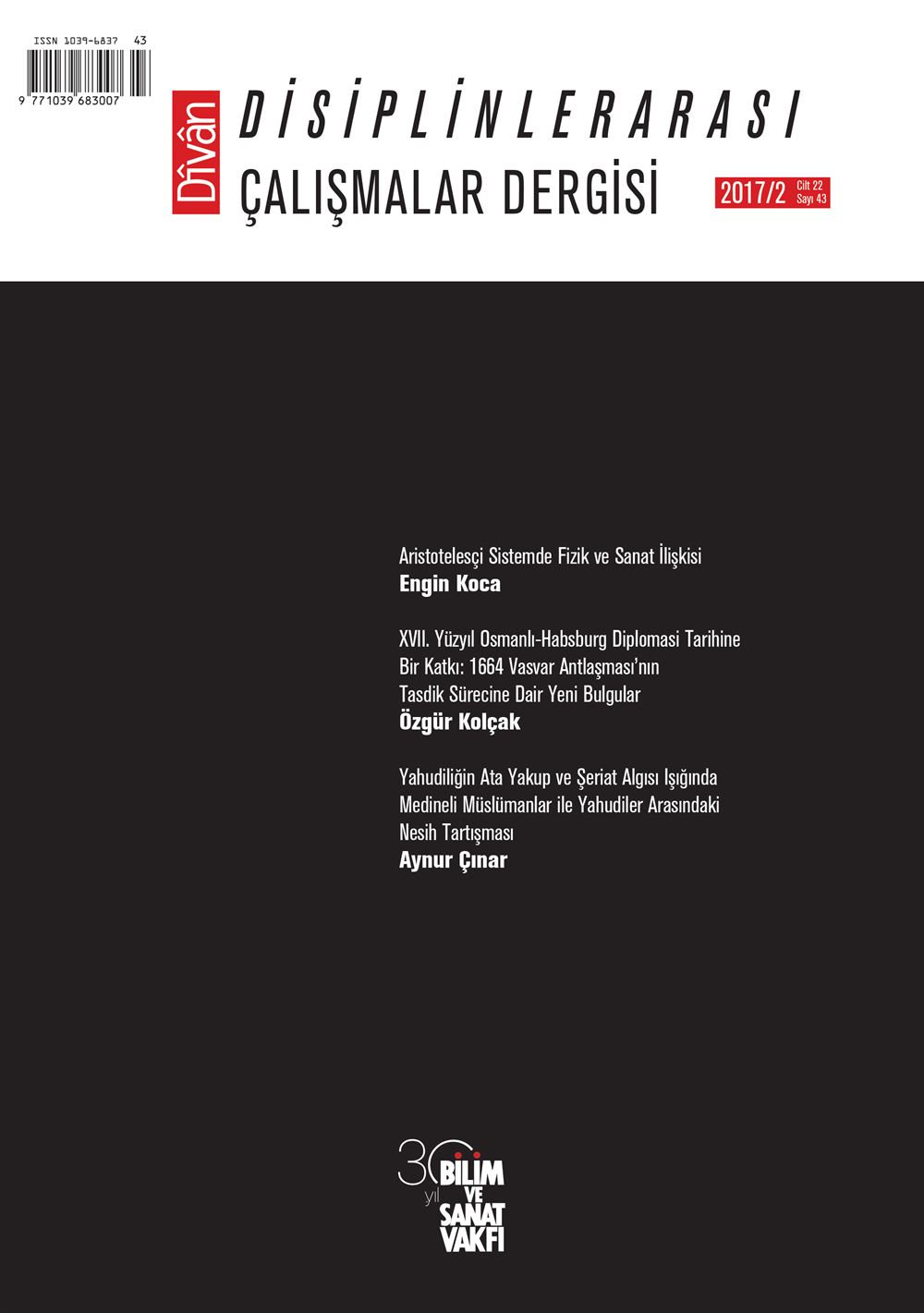Preface
Dîvân's 43th issue greets his readers with three essays on Aristotle's philosophy, history of Ottoman diplomacy and history of sects, and nine bookreviews from different disciplines of social sciences.
Articles
In the Aristotelian system, knowledge is classified into three kinds: (1) productive knowledge, which is the means of producing results for the benefit of mankind; (2) practical knowledge, which guides behavior; and (3) theoretical knowledge, which cannot be used as a means to any specific end. These species of knowledge are generally seen as independent fields that are unrelated to one another. This article claims that this view is wrong and tries to explain how the relationship between these fields of knowledge is based on the rule of the relationship between theoretical knowledge and productive knowledge. I will start by delimiting the subject of physics and then identify the relationship between natural arts (non-practical arts) and physics. After this, I will attempt to give a clear and distinct definition for the concepts of “productive knowledge,” “productive art,” and “theoretical knowledge” and clarify their relations with one another. The clarification of these concepts and their mutual relationships will also show the debt the modern classification of sciences owes to Aristotle; it will also provide a theoretical framework for understanding the relationship between the fields of engineering and the sciences (physics, chemistry, and biology) today.
Engin KocaFollowing the Peace of Zsitvatorok in 1606, Ottoman–Habsburg diplomatic relations underwent a gradual yet steady transformation. In 1606, the Ottoman and Habsburg delegations met on neutral ground at the mouth of the Zsitva River to negotiate a peace treaty that set the terms for diplomatic practice for the rest of the seventeenth century. The negotiated treaties, however, had to be ratified by the Habsburg and Ottoman monarchs to attain full effect. In some cases, the process of preparing the treaties (Ratifikation / ahidname) could involve numerous diplomatic missions and stretch out for years. In the case of the Treaty of Vasvar in 1664, however, the Habsburg ruler Leopold I (d. 1705) and the Ottoman sultan Mehmed IV (d. 1693) ratified and ceremoniously exchanged copies of the treaty in less than one and a half months. The secondary literature, however, especially studies on the Ottoman and Habsburg ambassadors exchanged in 1665, holds the incorrect view that the envoys who visited Vienna and Adrianople/Constantinople that year submitted the ratified versions of the Vasvar treaty to the Ottoman and Habsburg monarchs. In an attempt to reconstruct the ratification process of the Treaty of Vasvar historically, this paper brings together a wide collection of documents from the Prime Ministry Archives in Istanbul and the Austrian State Archives, as well as narrative sources from the period. Following its reconstruction of the ratification process, the paper examines the diplomatic and bureaucratic tools that enabled the relatively swift communication between the Ottoman and Habsburg offices (in contrast to much slower diplomatic proceedings in the first half of the seventeenth century) to offer an insight into the changing nature of the Ottoman early modern state.
Özgür KolçakIn this article, I undertake a new reading of the Qur’anic verse Al ‘Imran 93, which concerns Jacob—known as a “patriarch” in the Jewish tradition and as a “prophet” in the Islamic tradition—and the prohibitions he placed on himself. As I interpret the verse and decipher its meaning, I give particular attention to the relevant parts of the Torah and the Jewish religious tradition. Adopting the historical-phenomenological method of Comparative Religious Studies, I try to explain the ambiguous parts of the verse—such as “Israel,” “what Israel forbade for himself,” and Jewish understandings of “Torah”—with reference to the immediate context of the revelation of this verse (sabab al-nuzul). I also consider the relevant historical developments in Jewish religious history. In this way, based on my findings concerning the Jewish patriarch Jacob, I elucidate the historical-phenomenological background and the socio-cultural memory of the verse under study. In other words, combining the patriarch-prophet Jacob’s historical personality in both Judaism and Islam and their holy books, I argue that the verse in fact targeted the Jews of Medina, who rejected the occurrence of abrogation (naskh) in the divine laws.
Aynur Çınar





